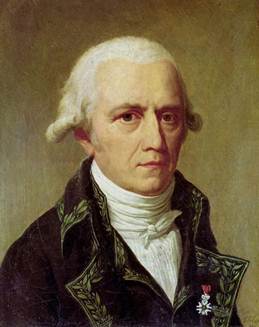Jean-Baptiste Pierre Antoine de Monet, Chevalier de la Marck

Jean-Baptiste Pierre Antoine de Monet, Chevalier de la Marck This is the person usually called Lamarck. He was born in 1744, before the French Revolution. He became Professor at the famous Jardin des Plantes in Paris, where the museums contained a rich collection of geological objects gathered from all over the world. He was initially strongly opposed to the idea of evolution, but his studies of these objects convinced him that the earth was far older than people thought, and that the geological evidence showed that species had changed. It was in 1800 that he delivered a lecture in which he championed his theory of transformationism (transmutation), and in 1809 he published his greatest work, Philosophie Zoologique, in which this theory was elaborated.
Lamarck’s achievements are remarkable:
- He was one of the first to use the term ‘Biology’ to describe the subject. He argued that living organisms had properties that were unique but that these were the outcome (today we would say emergent properties) of the physics and chemistry of matter. He was a materialist, but one who realised that the characteristic of living organisms was their organisation and structure, not just their components.
- He thought that all organisms had developed from tiny sea creatures. He therefore had a version of the common ancestor idea.
- He saw that there was a direction in the evolutionary process towards greater complexity. This led him to the concept of ‘le pouvoir de la vie’ (the force of life).
There were precursors of Lamarck, just as Lamarck himself was a precursor of Darwin. But Lamarck should be recognised as one of the key scientists in the development of evolutionary biology. Darwin fully recognised this status: “this justly celebrated naturalist….who upholds the doctrine that all species, including man, are descended from other species.” (Preface to the 4th edition of The Origin of Species, 1866).
Several developments led to the blackening of his name.
- He championed, but did not invent, the idea that acquired characteristics could be inherited. That itself would have been fine. Darwin also accepted this idea. The problem was that the subsequent establishment of the Weismann barrier (isolation of the germ line) and then the Central Dogma (isolation of the genome) led to the idea being so completely ridiculed that Lamarck’s reputation was ruined.
- ‘Le pouvoir de la vie’ was often interpreted to mean belief in a special ‘vital force’. My reading of his work is that he certainly did not intend this interpretation. He was a materialist, not a vitalist.
- His great rival, Georges Cuvier, opposed the idea of evolution and wrote a devastating criticism of Lamarck, which was used at his funeral.
http://www.victorianweb.org/science/science_texts/cuvier/cuvier_on_lamarck.htm
The historian of Science, Pietro Corsi, has created a superb on-line resource on Lamarck:
I wrote an imagined letter from Lamarck:
http://musicoflife.website/pdfs/LetterfromLamarck.pdf
which expresses the reasons why I think he has been badly treated.
These books by Eva Jablonka and her co-authors/editors are also valuable resources, particularly on the various mechanisms by which ‘lamarckian’ inheritance occurs:
Jablonka, E. and M. Lamb (1995). Epigenetic inheritance and evolution. The Lamarckian dimension. Oxford, OUP.
Jablonka, E. and M. Lamb (2005). Evolution in Four Dimensions. Boston, MIT Press.
Gissis, S. B. and E. Jablonka, Eds. (2011). Transformations of Lamarckism. From Subtle Fluids to Molecular Biology. Cambridge, Mass, MIT Press.
